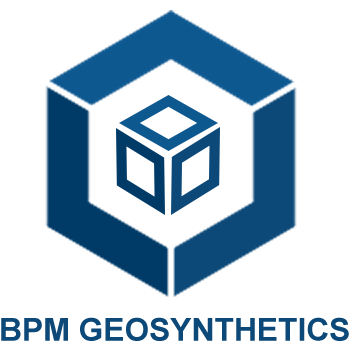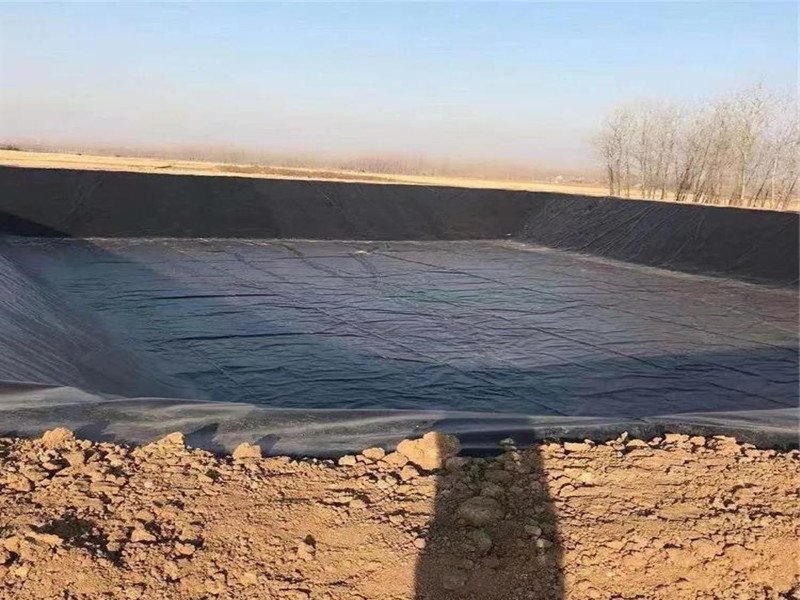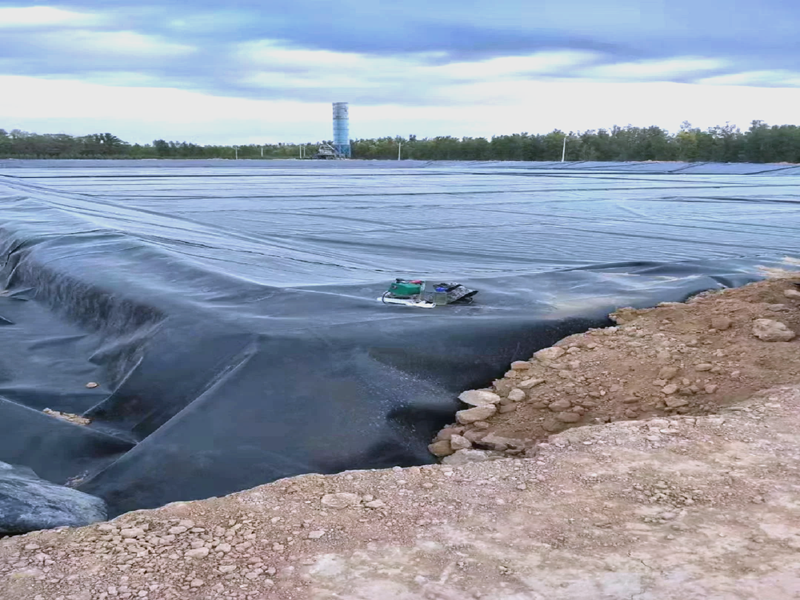Geomembrane Welding Machine is a specialized piece of equipment designed for the welding and joining of High-Density Polyethylene (HDPE) geomembranes.These machines are essential in various applications, including landfills, mining ponds, water containment facilities, and more. BPM Geosynthetics is an expert in this field with more than 10 years of experience, a professional construction team and high-quality product equipment.In this article, we will talk about the advantages and common types of welding machine.
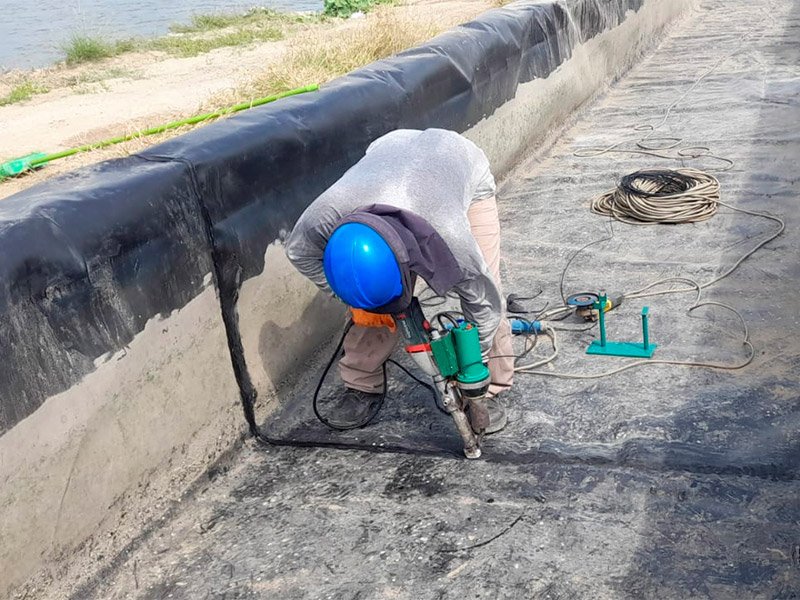
1.Advantages of Geomembrane Welding Machines
1.1 High Welding Quality
Geomembrane welding machines offer consistent and high-quality welding results. The mechanized welding process ensures uniformity and stability in the seam, eliminating potential issues of inconsistency or unstable quality often associated with manual welding.
1.2 Strong Seam Strength
The geomembrane welder achieves high-strength seams. Through proper heating and pressure application, the welding machine securely connects geomembrane materials, forming robust seams. These seams can withstand external stresses and environmental factors, ensuring the stability and reliability of the geomembrane during usage. For instance, in landfill applications, strong seams are crucial to prevent leakage of harmful chemicals into the environment.
1.3 Fast Welding Speed
The geomembrane plastic welders enable efficient welding, ensuring rapid construction progress. Compared to traditional manual welding methods, mechanized welding significantly reduces construction time and enhances work efficiency. Many clients achieve welding speeds of 40+ feet per minute (FPM) when welding liners. This fast production speed allows for the completion of large-scale projects in a shorter time frame, such as landfill lining and pond sealing.
1.4 Adaptability to Different Materials and Thicknesses
The geomembrane welding machine has the capability to handle various materials and thicknesses. Whether it is HDPE, LLDPE, PVC, or other types of geomembrane materials, the welding machine can effectively perform the welding process. Moreover, plastic geomembrane welding machines often feature adjustable heating and pressure settings to accommodate different thicknesses of geomembrane materials. This versatility makes them suitable for a wide range of applications and projects.
1.5 Reduces Labor Costs
Automated geomembrane welding machines require fewer workers to operate compared to manual welding methods. With precise speed control and minimal fabric handling, these machines can be operated by a single operator, reducing labor costs while maintaining high efficiency. This allows companies to downsize their workforce without compromising on productivity.
1.6 Safety Features
Modern geomembrane welding machines come equipped with advanced safety features to protect operators during use. Functions like automatic shut-off and overheating protection ensure safety in long welding tasks. These safety features help prevent accidents and ensure a smooth and secure welding process.
1.7 Customization Options
Many manufacturers offer customization options for geomembrane welding machines to meet specific project requirements. This includes adjusting the speed settings, temperature, or power range, as well as adding extra safety features. Customization allows companies to optimize their welding machines for their particular applications, ensuring the best possible results.
1.8 Multiple Welding Techniques
Geomembrane welding machines support various welding methods, providing flexibility and versatility for different projects. For example, Bortte’s welding machine for geomembranes supports extrusion welding, ultrasonic welding, hot wedge welding, and hot air welding. This makes it a cost-effective solution for industries that work with multiple types of geomembrane sheets.
1.9 Durable Construction
These machines are built to last, often made with high-quality materials like stainless steel and brass. This ensures long-lasting performance even in tough and harsh environments, reducing the need for frequent repairs or replacements.
1.10 Digital Control Panel
Many geomembrane welding machines feature digital control panels with LCD displays. This allows operators to easily analyze and adjust the real-time temperature or speed of welding, ensuring precise control over the welding process.
1.11 Wide Temperature Range
To weld different geomembrane materials, a wide temperature range is necessary. Geomembrane welding machines can deliver heating capacities from as low as 50 degrees Celsius to as high as 800 degrees Celsius, making them suitable for various materials and applications.
2.Types of geomembrane welding machines
Following are some common types of geomembrane welding machines
2.1 Hot Wedge Welding Machines
Working Principle: Utilize a heated wedge-shaped element to melt the geomembrane material. The two overlapping geomembrane layers are pressed together by rollers immediately after being heated by the wedge, forming a strong bond.
Advantages: Compact size, light weight, and high welding efficiency. Suitable for welding various hot-melt materials such as HDPE, LDPE, PVC, EVA, ECB, PP, etc. They are also ideal for long, straight seams and can achieve high welding speeds.
Applications: Widely used in landfill liners, water conservancy projects, roof construction, tunnel waterproofing, and other fields.
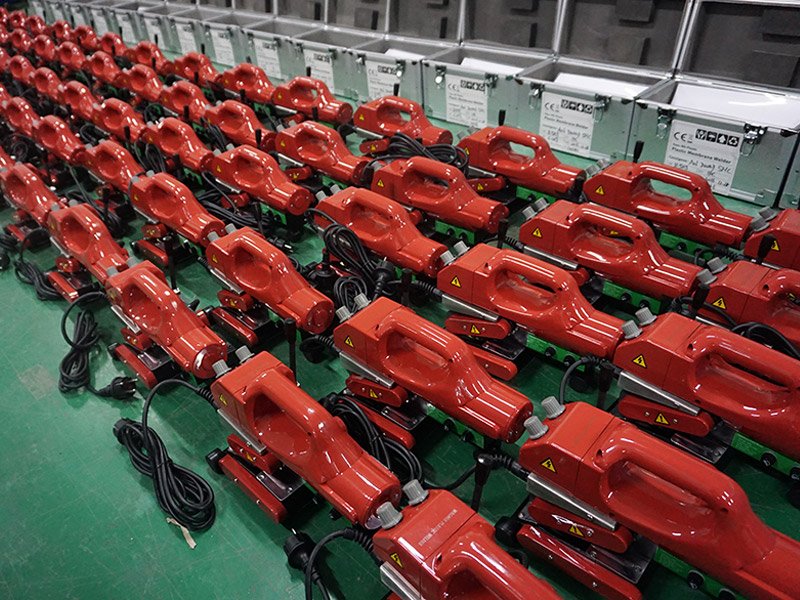
2.2Extrusion Welding Machines
Working Principle: Feed a plastic welding rod into a heated barrel, melt it, and then extrude the molten material onto the seam of the geomembrane to join the materials.
Advantages: Provide high seam strength and are suitable for thick geomembrane materials like HDPE. They can create strong, reliable welds even in complex or detailed areas.
Applications: Ideal for landfills, mining sites, and other projects where high welding strength is required.
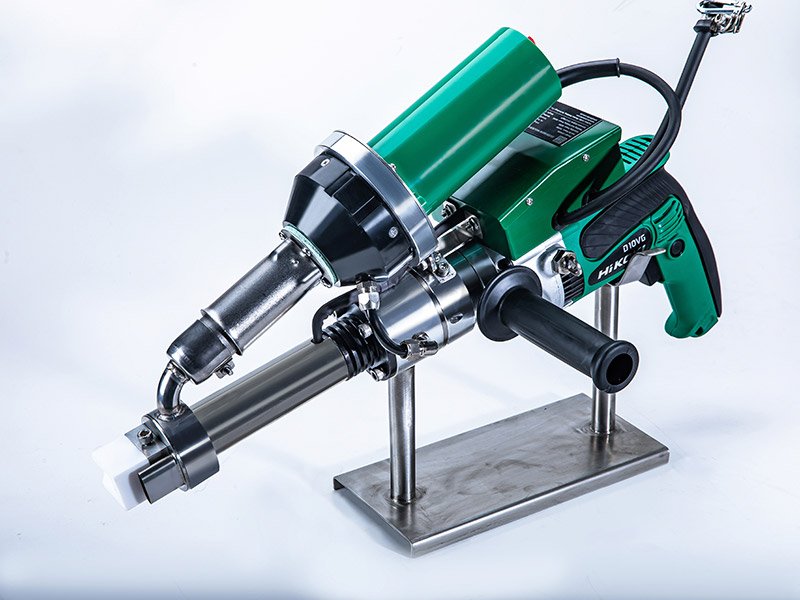
2.3 Hot Air Welding Machines
Working Principle: Use a heating element and nozzle to blow hot air onto the geomembrane, softening and melting the material, which is then pressed together to form a bond.
Advantages: Lightweight, easy to use, and portable. Suitable for smaller or complex layouts, as well as field repairs and small jobs. They can be used for a variety of geomembrane materials, including PVC, Urethane, HDPE, Polypropylene, and LLDPE.
Applications: Commonly used for roofing, canal linings, and other applications where portability and ease of use are important.

2.4 Automated Geomembrane Welding Systems
Working Principle: These systems are designed for high-volume production environments and often feature advanced controls and automation to ensure consistent and high-speed welding.
Advantages: Offer high-speed welding, consistent seam quality, and reduced labor costs. They can handle multiple roll feeding, seam alignment automation, and integrated quality control.
Applications: Ideal for large-scale containment systems and other projects requiring high production efficiency.
2.5 Bi-Directional Welding Machines
Working Principle: Capable of welding in both directions, which enhances productivity and alignment in tight or complex layouts.
Advantages: Optimal for modular systems and roofs, including roof construction and modular waterproofing systems. They increase accuracy and reduce turnaround time.
Applications: Suitable for projects with complex shapes or limited space where precise alignment and efficient welding are crucial.
2.6 Handheld Welding Machines
Working Principle: These machines are easy to operate and are typically used for small-area or small-part geomembrane welding tasks.
Advantages: Portable and convenient for spot welding or repairing small sections of geomembrane.
Applications: Ideal for maintenance work, small-scale projects, or areas where larger machines are not practical.
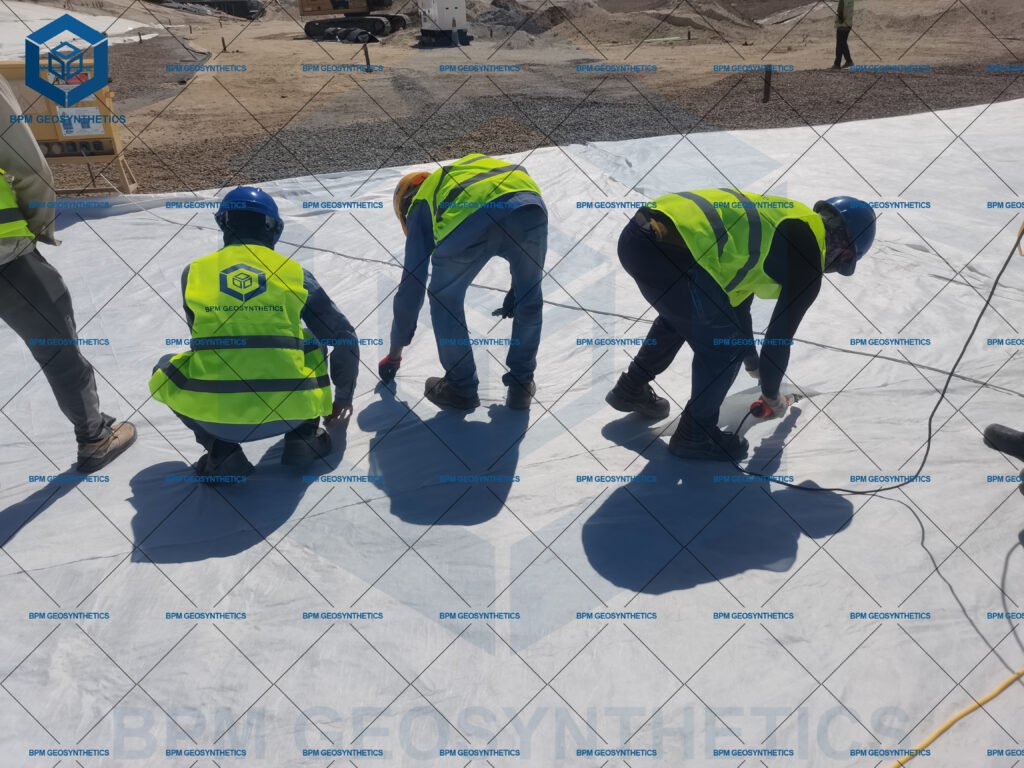
Conclusion
Geomembrane welding machines offer numerous advantages that make them indispensable tools in various industries. Their ability to provide high welding quality, strong seam strength, fast welding speed, adaptability to different materials and thicknesses, reduced labor costs, safety features, customization options, multiple welding techniques, durable construction, digital control panels, and wide temperature ranges make them the ideal choice for projects requiring reliable and efficient geomembrane welding. More information, please contact BPM Geosynthetics Team.
